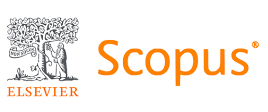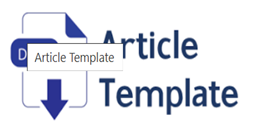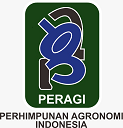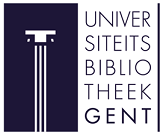Optimizing the Integrated Farming System of Coffee and Goat to Maximize Farmers' Income in North Sumatra, Indonesia
Abstract
Most coffee farmers in North Sumatra still need to implement an integrated coffee and goat cultivation system. Only 0.2% of farmers have implemented the program. An integrated farming system cannot be implemented due to limited resources, and optimal conditions for an integrated farming system for coffee plants and goat livestock in North Sumatra have yet to be found. Therefore, this study aims to determine the optimal conditions for an integrated farming system for coffee plants and goat livestock to maximize farmers' income. The sample size is six farming units spread across three districts: Simalungun, North Tapanuli, and Karo districts in North Sumatra Province. Quantitative analysis using a linear programming model was carried out computationally with the help of LINDO 6.1 software. The study results show that the revenue for the optimal solution from the integration model generates IDR 169,358,700.00, 1.04% higher than the actual income. This was due to an increase in coffee bean productivity to 1.68 tons.ha-1 per year with a simple shading coffee pattern, namely coffee planting with a cover crop of 300 trees per ha, as well as an increase in the number of goats kept. , from the actual condition of 59.33 goats to 117 goats. Farmers are advised to utilize all products between coffee and goat farms as their respective production inputs and not sell intermediate products.
Keywords
Full Text:
PDFReferences
Agustono, B., Lamid, M., Ma’ruf, A., & Purnama, M. T. E. (2018). Identification of agricultural and plantation byproducts as inconventional feed nutrition in Banyuwangi. Jurnal Medik Veteriner, 1(1), 12-22. Veteriner, 1(1), 12. https://doi.org/10.20473/jmv.vol1.iss1.2017.12-22
Arofi, F., Rukmana, D., & Ibrahim, B. (2015). The analysis of integration sustainability of coffee plantation and goat husbandry (a case study in Ampelgading subdistrict, Malang Regency, East Java, Indonesia). Journal of Economics and Sustainable Development, 6(10), 1-9. https://core.ac.uk/download/pdf/234647044.pdf
Beneke, R. R. (1973). Linear Programming Applications to Agriculture.
Chalil, D., & Negara, S. (2022). The integration impact of coffee plants with bee cultivation on increasing income and production of coffee beans in Simalungun Regency, North Sumatra, Indonesia. Agro Bali : Agricultural Journal,5(3),529–542. https://doi.org/10.37637/ab.v5i3.994
Chaniago, T.D. (1993). Present managing systems. In: Tomaszewska, M.W.; S. Gerdiner; A. Djajanegara, I.M. Mastika.; & T.R. Wiradarya. editor. Small Ruminant Production in the Humid Tropics. Sebelas Maret University Press, Surakarta, Indonesia.
Debertin, D.L. (2012). Agricultural Production Economics. Ed 2nd. University Of Kentucky. Kentucky, USA.
Dini, I. R., & Salbiah, D. (2019). Growth and pepper yields (capsicum annuum l.) By giving a formulation of biological fertilizer of cellulolytic bacteria based on organic liquid waste. Journal Of Physics: Conference Series, 1351(1), 12097.
Ditjenbun (2022). Statistik Perkebunan Indonesia Komoditas Kopi 2020-2022. Direktorat Jenderal Perkebunan, Jakarta.
Diwyanto, K. (2014). Bangun Karso’s Dairy goat farming practices in Bogor-Indonesia. List Ed, 86. Proceedings of 2nd Asian-Australasian Dairy Goat Conference. Bogor, Indonesia. April 25-27th. https://repository.ugm.ac.id/136052/1/adg%202014.pdf
Doll, J.P. & F. Orazem (1978). Production economics: Theory with applications. Ed 2nd. Grid. Inc Indiana-ola, Columbus.
Elisabeth, D. A. A., Yonekura, H., & Takashino, N. (2013). Adoption and Sustainability of New Technologies: A Case Study of Integrated Coffee-Goat Farming in Bali. Journal of Rural Society and Economics, 31(1), 39-45. https://www.researchgate.net/profile/Hitoshi-Yonekura/publication/335477707
Fadilah, R., Putra, R. P., & Hambali, A. (2020). Aplikasi sistem leisa (low external input sustainable agriculture) untuk mendukung pertanian berkelanjutan di Desa Samangki, Kecamatan Simbang Kabupaten Maros. Seminar Nasional Pengabdian Kepada Masyarakat, 429–436. https://ojs.unm.ac.id/semnaslpm/article/view/15949
Hida, D.A.N. (2020). Strategi pengembangan sistem integrasi tanaman kopi arabika dan ternak kambing (Kasus: Kecamatan Payung, Kabupaten Karo). [Skirpsi]. Universitas Sumatera Utara, Medan. http://repositori.usu.ac.id/handle/123456789/25796
Howara, D. (2011). Optimalization of the rice and cuttle integrated farming development in majalengka regency. 18(April), 43–49.
Ismayadi, C. (2000). Perkembangan teknologi pengolahan kopi arabika di Indonesia. Warta Pusat Penelitian Kopi dan Kakao Indonesia, 16(3).
Kariyasa, K. (2005). Sistem integrasi tanaman-ternak dalam perspektif reorientasi kebijakan subsidi pupuk dan peningkatan pendapatan petani.
Kleden, M. M., Ratu, M. R. ., & Randu, M. D. . (2015). Kapasitas tampung hijauan pakan dalam areal perkebunan kopi dan padang rumput alam di Kabupaten Flores Timur Nusa Tenggara Timur. ZOOTEC, 35 (2), 340-350. https://doi.org/10.35792/zot.35.2.2015.9274
Kusnadi, N. (2012). Integrasi Usahatani Padi-Ternak pada Usahatani Kecil di Provinsi Jawa Barat: Komplementer atau Kompetitif?. Proceedings of Seminar Penelitian Unggulan Departemen Agribisnis 2013. Bogor, Indonesia.
Lubis, S. N., Hida, D. A. N., & Fauzia, L. (2021). Integrated farming system of Arabica coffee in Karo District, North Sumatera. Proceedings of IOP Conf Ser Earth Environ Sci. 782 (2), 022011. Universitas Sumatera Utara, Medan, Indonesia. Juni 2021. https://doi.org/10.1088/1755-1315/782/2/022011
Mendoza, T. C. (2005). An energy-based analysis of organic, low external input sustainable agriculture (LEISA) and conventional rice production in the Philippines. Philipp Agric Sci, 88(3), 257–267.
Murwani, S., & Karyanto, A. (2010). Pengaruh pupuk kandang dan pola tanam sayuran di sela kopi muda terhadap populasi dan biomassa cacing tanah. Seminar Nasional Keragaman Hayati Tanah-I, 126.
Nurcholis, M. (2011). Pengembangan integrated farming system untuk pengendalian alih fungsi lahan pertanian. Proceedings of Seminar Nasional Budidaya Pertanian. Urgensi dan Strategi Pengendalian Alih Fungsi Lahan Pertanian di Bengkulu. Bengkulu, Indonesia. http://repository.unib.ac.id/121/1/7-nurcholis/20upn.pdf
Setyawan, H. B., & Utami, D. H. (2020). Optimasi diversifikasi usaha ternak domba tanaman kopi dan tanaman pangan, studi kasus di lembaga masyarakat desa hutan (LMDH) taman putri desa kemiri Kecamatan Panti, Kabupaten Jember Indonesia. Prosiding Seminar Nasional Teknologi Peternakan Dan Veteriner, 378–390.
Soedjana, T. D. (2007). Sistem usaha tani terintegrasi tanaman-ternak sebagai respons petani terhadap faktor risiko. Jurnal Litbang Pertanian, 26(2), 82–87. http://203.190.36.42/publikasi/p3262075.pdf
Sudana, W. (2005). Evaluasi kinerja diseminasi teknologi integrasi ternak kambing dan kopi di Bongancina, Bali. SOCA: Jurnal Sosial Ekonomi Pertanian, 5(3), 1-18. Udayana University, Bali, Indonesia.
Uftori, M. (2010). Kesuburan tanah. Gontor Agrotect Science Journal, 1(2), 71-93.
Refbacks
- There are currently no refbacks.


























